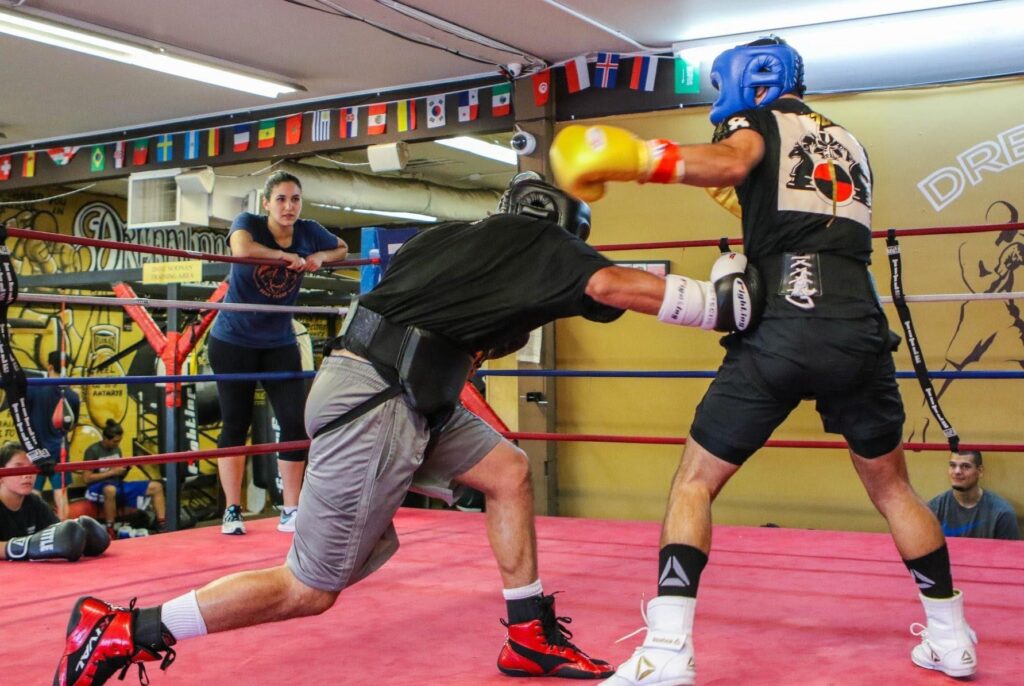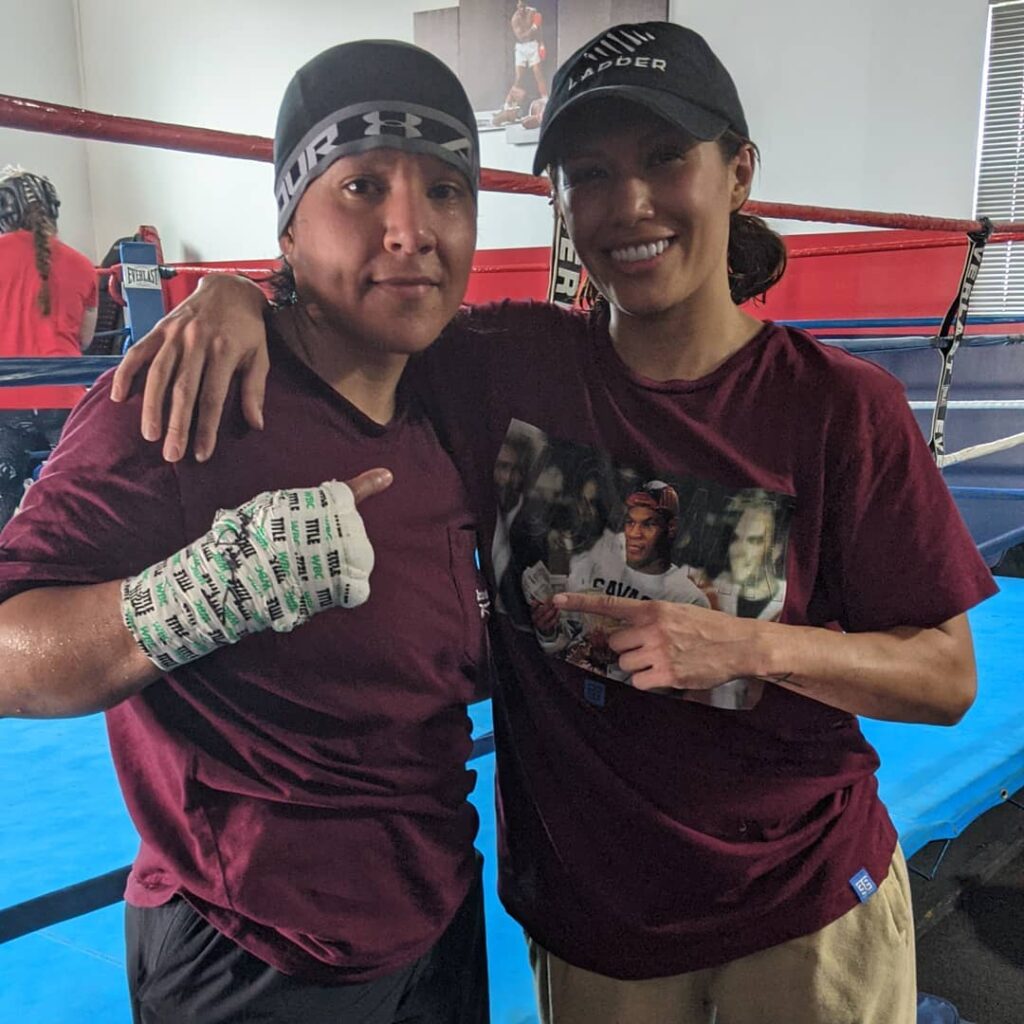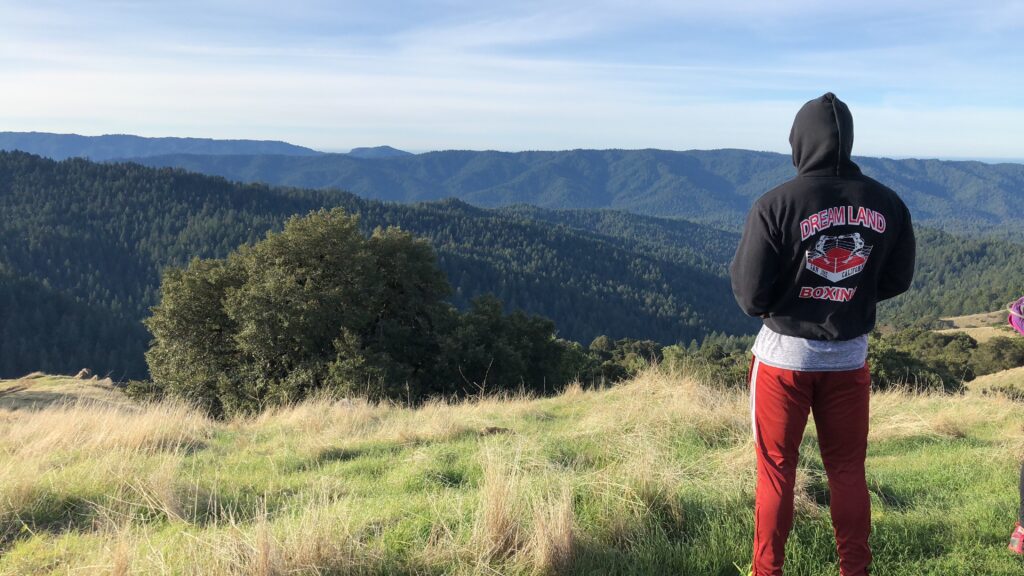Conditioning for Boxing
So you’re getting ready for your first boxing match. In amateur boxing, one of the most important aspects of your training is your conditioning. Your first amateur boxing match will be three two-minute rounds, or a total of six minutes of action. But, trust me, those six minutes will be intense. Amateur boxing awards for volume, and it’s important to be able to maintain a high punch-rate without getting tired.
The most important part of your training will come from sparring. Sparring, by itself, will improve your conditioning. Furthermore, more so than any time you post on the track, your performance in sparring will truly reflect how ready you are to compete.

How Often Should I Spar?
Different coaches employ different strategies towards sparring, but at Dreamland, our amateur team typically doesn’t spar over 3x/week. We employ a quality-over-quantity approach, with our fighters getting some of the best sparring in the Bay Area by having other gyms come by regularly for sparring. As I recap on my weekly This Week at Dreamland Boxing column, we’ve had Team USA Olympic hopefuls (Charlie Sheehy, Alexis Gomez, Ruben Villa, etc.) and a number of professional boxing prospects give our team rounds. Outside of our weekly sparring, our fighters spend most of their time at the gym drilling and perfecting the fundamentals of boxing.

What Should I be Doing Outside of the Gym?
Outside of the gym, a fighter can’t neglect his or her strength and conditioning training. Our amateur team has trained at NorCal Functional Fitness, Sensory Speed, and PerformanceGaines for their strength and conditioning. Separately, I also take our team either to the hills for trail runs (Mt Umunhum, Quicksilver, etc.) or the track for our sprint workouts.

What are some recommended conditioning workouts?
Time Interval Sprints (Loading Phase):
30-30 Drills:
This can be sprints or actual sparring drills. In sparring, it may be 30 seconds of working offense and 30 seconds of working defense. On the track, it may be a 30 second sprint followed by a 30 second recovery jog.
60-60’s:
Similar to above, you can change the intervals to 60 second sprints followed 60 seconds of recovery.
Tabata’s (20-10):
We frequently do tabata’s on the assault bike, giving an all-out sprint for 20 seconds followed by 10 seconds of recovery.
Prior to Your Fight (Training Camp, Fight Date Set):
Half-mile sprints:
Warm-Up: 1 mile jog
Sprint Workout: 4 half-mile sprints, with 1 minute rest
Half-mile sprint
1 minute rest
(REPEAT 4X)
Cool-down: 1 mile jog
In order to simulate the length of a round, you can do half-mile sprints with a 1 minute rest period. I used to warm-up with a mile run, followed by 4 half-mile sprints with a 1 minute rest, and cool-off with another mile cooldown. That amounts to 4 miles/day, with 2 being my warm-up and cooldown, and the other 2 being my sprints:
Coach Ian – Half Mile Sprints for Boxing
Yasso 800’s:
Warm-Up: 1 mile jog
Yasso 800’s:
Half-mile sprint
Quarter-mile jog
(REPEAT UP TO 8X)
Cool-down: 1 mile jog
We typically progress through various interval workouts prior to starting a Yasso 800 program, from 30-30’s to 60-60’s to half-mile sprints and then to Yasso 800’s. By the time we get to Yasso 800’s we start off with 4 half-mile repeats, and add one repeat every week until we reach 8.
Misc Sprints and/or High-Intensity Workouts:
With no competition in sight, sometimes we like to have fun and mix it up. Examples would be trail runs, banded sprints, sled pushes, relay races, hill repeats, battle ropes, assault bike intervals, etc.
Running Distance:
This is the least important part of training for an amateur bout. Running 10+ miles doesn’t correlate with a 6-minute fight. Running distance can aid in weight loss, so a long Saturday run isn’t out of question. I tell my fighters to limit distance running to once per week.
Still, I like to challenge my fighters to run some long trails as another test of their mental fortitude and to help build their confidence. We like to conquer different peaks around the Bay Area (Mt Umunhum, Mission Peak, Mt Sombroso, etc.)
How Fast Should I Be Running?
This varies greatly from person to person, especially across different weight classes. Heavyweights typically won’t have a mile time nearly as fast as lightweights, so you really can’t gauge a person’s conditioning solely by their mile time. I typically look at the two metrics:
Their 6 minute test (Pre-test and Post-test):
I typically like to do a pre-test before each fighter starts their sprint program. They do a 6-minute test, where they run as far as they can for six-minutes. From there, I use a calculator noted here to gauge your vVO2max (minimal velocity to maintain your VO2 max) and the calculator spits out your estimated splits for 30-30, 60-60, and 800 repeats.
Over 8-12 weeks, we have regularly seen a 10-15% improvement in time.
Heart Rate Training (During Training)
While our fighters can simply use the times spit out by the calculator above, if they have access to a heart-rate monitor (a Polar or an Apple Watch), they can also track these numbers during their training as well. I typically shoot for the following heart-rate zones:
- Sprints: Heart-rate Zone 5
- Zone 5 is between 90-100% of your HR Max. A simple calculation for HR Max (without getting it tested) is 220 – (age). For example, at 30 years old, my heart rate max is 190. My Zone 5 target would then be between 171-190bpm.
- Recovery: Heart-rate Zone 3 (or using the Maffetone Method)
- Zone 3 is between 70-80% of your HR Max. For me, that would be between 133-152bpm.
- Maffetone Rule: This is also in line with the Maffetone Rule, which I use when I want to do an easy long-distance run. The Maffetone Rule says to keep your heart-rate below 180 – (age). In my case, that would be keeping my HR below 150.
A great guide for heart-rate zones can be found on the Polar website here. Polar puts out a great heart-rate monitoring chest strap for an accurate read of your HR data.
Breathing: During your recovery period (or even during the minute rest during your bout), it’s important to breathe deeply through the nose all the way to your belly. This is far more effective and efficient than the quick shallow breaths that people do when panicking. You can even practice your breathwork during the recovery jog in your intervals and work to get your heart rate back to Zone 3. As you progress through your training, it will get easier and easier to get back to Zone 3.
I wrote about this in my prior guide for your first boxing match, which I’ll restate below:
“Carbon dioxide also had a profound dilating effect on blood vessels, opening these pathways so they could carry more oxygen-rich blood to hungry cells. Breathing less allowed animals to produce more energy, more efficiently.
Meanwhile, heavy and panicked breaths would purge carbon dioxide. Just a few moments of heavy breathing above metabolic needs could cause reduced blood flow to muscles, tissues, and organs. We’d feel light-headed, cramp up, get a headache, or even black out. If these tissues were denied consistent blood flow for long enough, they’d break down.”
Breath: The New Science of a Lost Art, James Nestor
The first thing my coach had me do in between rounds was take three deep (diaphragmatic) breaths, prior to him giving any instruction. It’s something I now do when I corner fighters (after taking out their mouthpiece), because if they spend the entire time shallow breathing then, one, they won’t ever truly catch their breath, and, two, they probably won’t be able to focus or listen to me in between rounds. A lot of focus is placed on the two-minutes you’re competing. But also be aware of the one-minute you have to gather instructions from your coach, slow your heart rate down, recover, and prep yourself for the next round. Beyond using breathwork to get yourself into the proper mental state and focus, it’s also extremely important for efficient delivery of oxygen and CO2 retention both during and in-between rounds.
Final thoughts: The biggest gauge for your conditioning for boxing will be quality sparring. Not all rounds are created equal; going 10 light rounds isn’t the same as going 4 rounds at a high pace. To supplement your sparring, doing sprint intervals can help tremendously. It’s important to get your sprint pace up to Zone 5, which will be similar to the speed of your fight, and recover in Zone 3, where you will want to get your HR down during your one-minute rest period. Actual sprint times are a benchmark individual to you and can’t be compared across fighters in different weight classes. Distance running should be done sparingly, but can help in getting on weight. In addition to your work periods, maximize your recovery periods with proper diaphragmatic breathing.
If you enjoyed this article, please sign up for my newsletter below:
About the Author:
Coach Ian is an ultra-marathon runner and a volunteer coach at the non-profit boxing organization, Dreamland Boxing, in San Jose, CA. He competed in boxing for both Dreamland and collegiately at UCLA. His goal is to empower all to be the best that they can be, in boxing and in life. You can find Coach Ian on Instagram, Facebook, and YouTube.